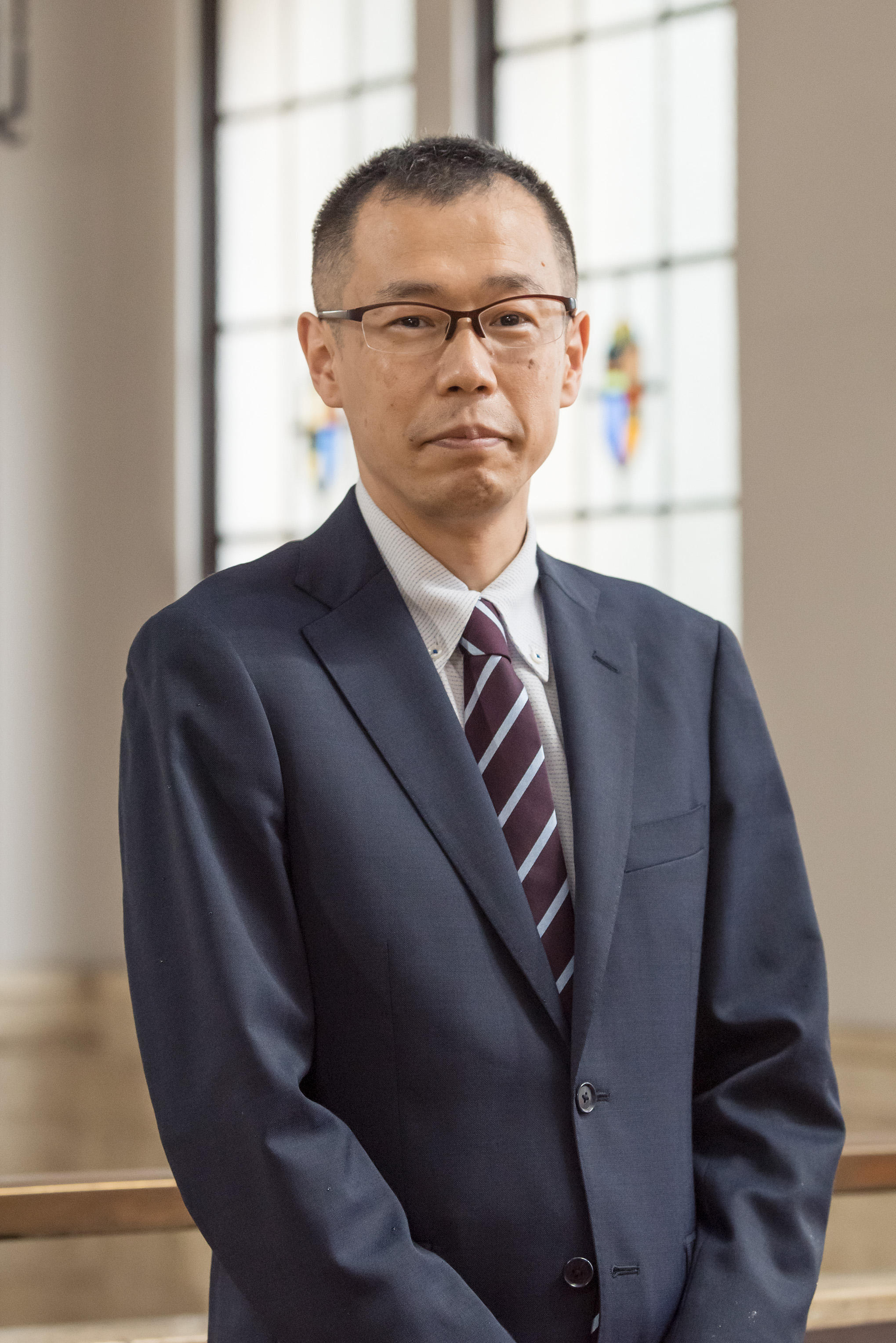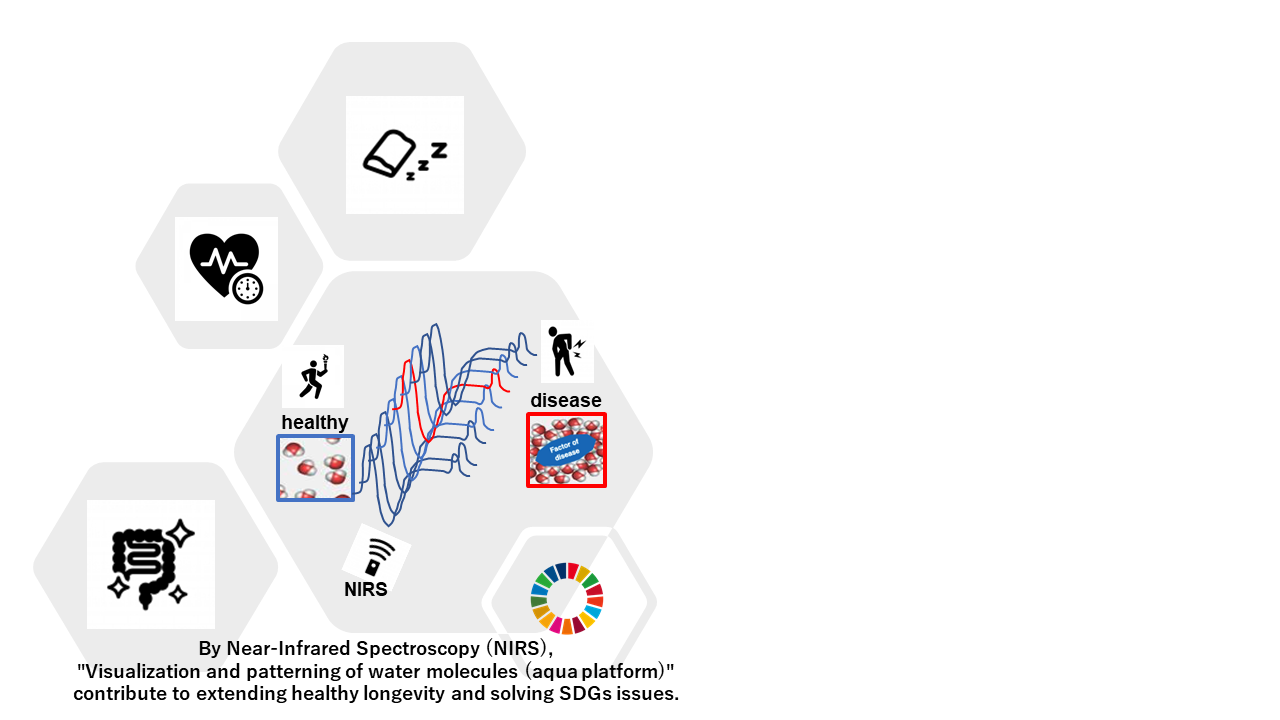Yasuhiro Kato
Self-introduction message & Background and career
 I am Yashiro Kato from Nagoya, Japan. During my time at the Tokyo University of Pharmacy and Life Sciences, I became fascinated by the high environmental adaptability of immobile plants. I continued my research at Nagoya University, where I earned a Ph.D. from the Graduate School of Bio-agricultural Science focusing on the salt tolerance mechanism (water stress) of plants. I then did research on the water channels of organisms (aquaporin: AQP) at Johns Hopkins University for a short period through a JSPS research fellowship. I also established a method of selecting and enriching cells by taking advantage of the functions of aquaporins while at Tokyo Dental College and Keio University, for which I earned the Best Presentation Award of the Japanese Pharmacological Society Annual Meeting. Furthermore, I went out to Peking University in order to clarify the relationship between AQPs which regulate the flow of water in organisms and poor health before the onset of symptoms. While there, I was able to witness firsthand the speed of social implementation and innovation in China. After returning to Japan, I engaged in industry-academia collaborative creation as a University Research Administrator (URA) at the Nagoya University Academic Research & Industry-Academia-Government Collaboration Headquarters. Additionally, I established the "Aqua Lab," a general incorporated association that aims to resolve water-related issues on a local level as well as conducting experimentation classes. Based on these experiences, for the Keio 2040 Research Project, I would like to promote the coordination of individual projects and establish an "aqua-platform" to contribute to healthy longevity and the SDGs.
I am Yashiro Kato from Nagoya, Japan. During my time at the Tokyo University of Pharmacy and Life Sciences, I became fascinated by the high environmental adaptability of immobile plants. I continued my research at Nagoya University, where I earned a Ph.D. from the Graduate School of Bio-agricultural Science focusing on the salt tolerance mechanism (water stress) of plants. I then did research on the water channels of organisms (aquaporin: AQP) at Johns Hopkins University for a short period through a JSPS research fellowship. I also established a method of selecting and enriching cells by taking advantage of the functions of aquaporins while at Tokyo Dental College and Keio University, for which I earned the Best Presentation Award of the Japanese Pharmacological Society Annual Meeting. Furthermore, I went out to Peking University in order to clarify the relationship between AQPs which regulate the flow of water in organisms and poor health before the onset of symptoms. While there, I was able to witness firsthand the speed of social implementation and innovation in China. After returning to Japan, I engaged in industry-academia collaborative creation as a University Research Administrator (URA) at the Nagoya University Academic Research & Industry-Academia-Government Collaboration Headquarters. Additionally, I established the "Aqua Lab," a general incorporated association that aims to resolve water-related issues on a local level as well as conducting experimentation classes. Based on these experiences, for the Keio 2040 Research Project, I would like to promote the coordination of individual projects and establish an "aqua-platform" to contribute to healthy longevity and the SDGs.

Research achievements
Awards:
- Excellence Poster Award of Science and Technology Innovation Business at the 9th Science Annual Meeting (China), 2016
- Excellence Presentation Award at the Annual Meeting of the Japan Pharmacological Society, 2014
- President's Encouragement Research Grant from Tokyo Dental College, 2009
- International Exchange subsidy from Kato Memorial Bioscience Research Foundation, 2001
Publications:
- Y. Kato, Y. Abe, M. Yasui. Bioengineering technique by the freeze tolerance of water channel Aquaporin, Development Kidney, 23(1): 23-27, 2014
- J. Kato, Y. Takai, M.K. Hayashi, Y. Kato, M. Tanaka, Y. Soma, Y. Abe, M. Yasui. Expression and localization of aquaporin-4 in sensory ganglia, Biochemical and Biophysical Research Communications 451:562-567, 2014
- Y. Kato, T. Miyauchi, Y. Abe, D.Kojic, M. Tanaka, N, Chikazawa, Y. Nakatake, S. B. H. Ko, D, Kobayashi, A. Hazama, S. Fujiwara, T. Uchida and M. Yasui. Unprecedented Cell-Selection Using Ultra-Quick Freezing Combined with Aquaporin Expression. PLoS ONE 9(2): e87644, 2014
- K. Miyazaki, Y. Abe, H. Iwanari, Y. Suzuki, T. Kikuchi.T. IYO, Kikuchi T, Ito T, Kato J, O. Kusano-Arai, T. Takahashi, S. Nishiyama, H. Ikeshima-kataoka, T. Tsuji, T. Arimitsu, Y. Kato, T. Sakihama, Y. Toyama, K. Fujihara, T. Hamakubo and M. Yasui. Establishment of Monoclonal Antibodies Against the Extracellular Domain that Block Binding of NMO-IgG to AQP4. J Neuroimmunol. 260:107-116. 2013
- W. Liu, C. Deng, K. Merrett, C. R. McLaughlin, P. Fagerholm, SN. S. Lagali, B. Heyne, J.C. Scaiano, M. A. Watsky, Y. Kato, R. Munger, N. Shinozaki, F. Li and M. Griffith. Collagen-phosphorylcholine interpenetrating network hydrogels as corneal substitutes. Biomaterials 30: 1551-1559, 2009
- K. Merrett, P. Fagerholm, C. R. McLaughlin, S. Dravida, N. Lagali1, N. Shinozaki, M. A. Watsky, R. Munger1, Y. Kato, F. Li1, C. J. Marmo and M. Griffith. Tissue Engineered Recombinant Human Collagen-based Corneal Substitutes for Implantation: Performance of Type I Versus Type III Collagen. IOVS 49: 3887-3894, 2008
- N. Kato, M. Akai, l. Zulkifli, N. Matsuda, Y. Kato, S. Goshima, A. Hazama, M. Yamagami, H. R. Guy and N. Nobuyuki. Role of Positively Charged Amino Acids in the M2D Transmembrane Helix of Ktr/Trk/HKT Type Cation Transporters. Channels 1: 161-171, 2007
- K. Liu, D. Kozono, Y. Kato, P. Agre, A. Hazama, and M. Yasui. Conversion of aquaporin 6 from an anion channel to a water selective channel by a single amino acid substitution. Proc. Natl. Acad. Sci. USA 102(6): 2192-7, 2005
- Y. Kato, A. Hazama, M. Yamagami and N. Uozumi. Addition of a peptide tag at the C terminus of AtHKT1 inhibits its Na+ transport. Biosci. Biotechnol. Biochem. 10: 2291-2293, 2003
- N. Uozumi, Y. Kato, N. Matsuda, Y. Sato, and A. Mizutani. Structure and function of the Na+/K+ translocating AtHKT1 transporters from plants Transworld Research Network. Recent Research Development in Membrane Biology 1: 119-126, 2002
- Y. Kato, M. Sakaguchi, Y Mori, K. Saito, T. Nakamura, E.P. Bakker, Y. Sato, S. Goshima, and N. Uozumi. Evidence in support of a four transmembrane-pore-transmembrane topology model for the Arabidopsis thaliana Na+/K+ translocating AtHKT1 protein, a member of the superfamily of K+ transporters. Proc. Natl. Acad. Sci. USA 98: 6488-6493, 2001
- A. Mizutani, Y. Sato, N. Matsuda, Y. Kato, and N. Uozumi. Potassium ion transport system and physiological role, Plant Cell Engineering Series, Shujunsha, 18: 40-47, 2003





